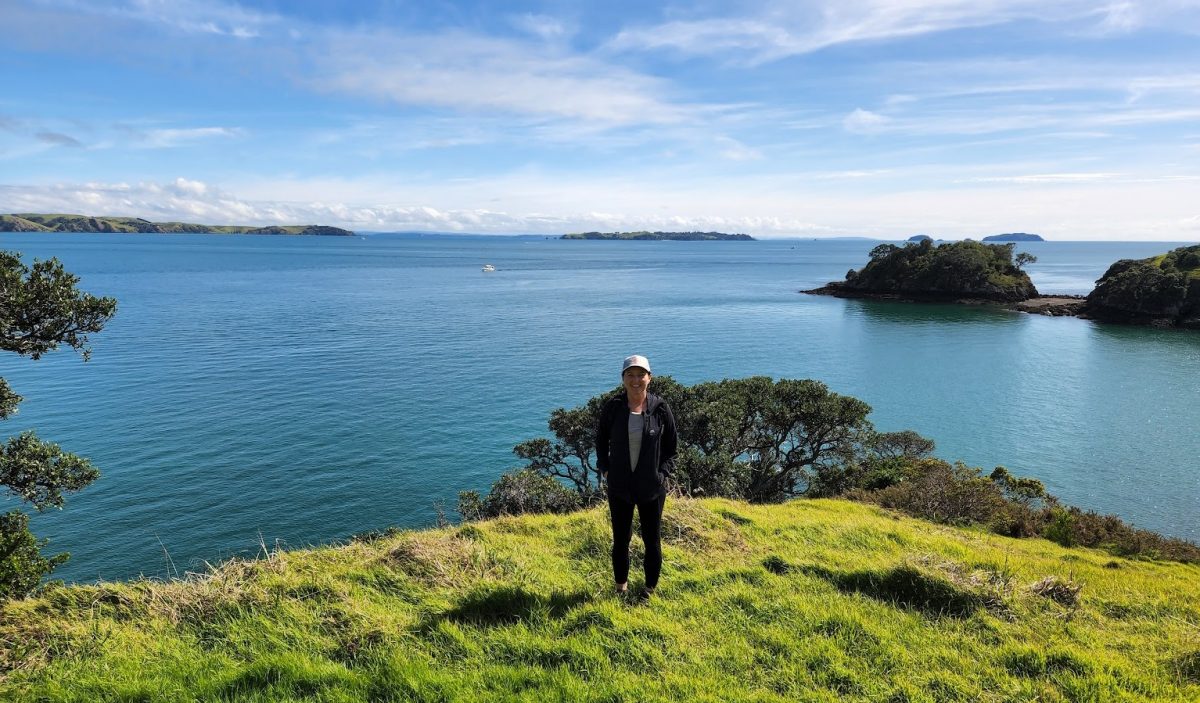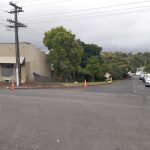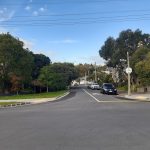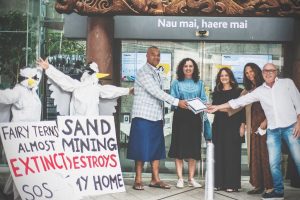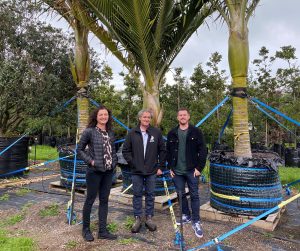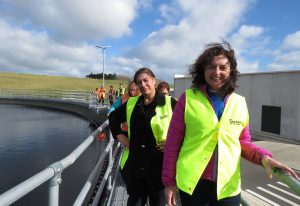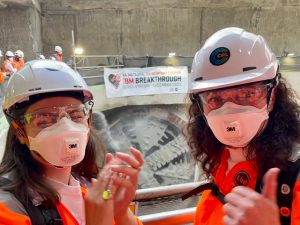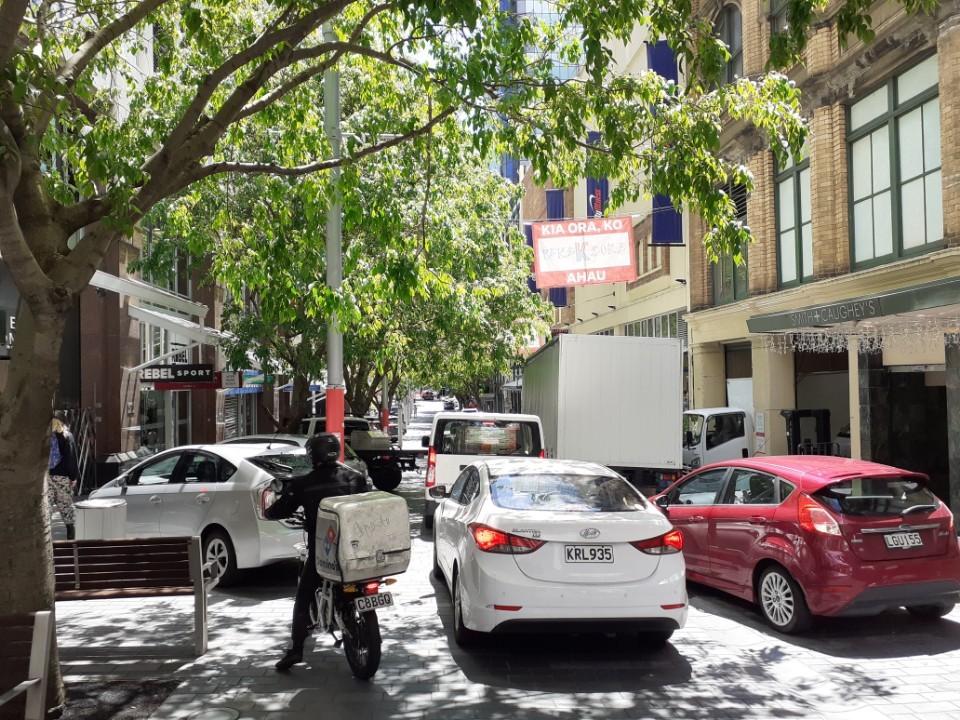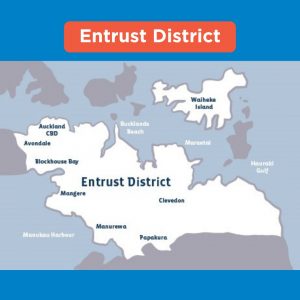Kia ora, this is my final Councillor report for the 2019 – 2022 triennium of Auckland Council. I have reported monthly throughout my time as Councillor for Waitematā and Gulf. This month I take the opportunity to reflect on the last three years.
It has been an unusual and challenging term. It got off to an ominous start with the Auckland Convention Centre fire forcing an evacuation of the Council’s HQ at Albert Street and the cancellation of the hui for all elected members that traditionally kicks off the new term. Little did we know that we would not have another opportunity to meet all together again in person as elected representatives from across the Auckland Region.
The pandemic has of course dominated much of the last three years and created new challenges. It has been a really difficult time for communities, businesses and for Council the impact of COVID-19 has knocked a $900 million hole in the budget. I think Auckland Council has an important role in the recovery and in responding to the safety and well-being needs of the community.
COVID-19 response and recovery

Following the first lockdown in March 2020 Council quickly pivoted to online working and supporting the community with essential services. Health & safety and maintaining supply lines to all our communities were priorities. I worked with the Aotea Great Barrier Local Board to ensure Council’s emergency freight subsidy for Covid-19 Alert Level 4 was secured for Barrier Air to continue operations.
As we moved to recovery from lockdowns I supported council assistance to business, for example, through extensions to street trading licenses and the waiving of street trading rents. The recovery plan for the city centre is currently underway with a focus on marketing, activation, events and placemaking as well as work to clean streets and improve safety. Funding secured from government provided $60m business support package through Activate Tāmaki Makaurau and $25.5m for visitor vouchers (almost 106,000 distributed) through Reactivate Tāmaki Makaurau both administered through Tātaki Auckland Unlimited.
From 13 September face masks will no longer be required at Auckland Council facilities or offices, following the decision by the Government to remove the COVID-19 Protection Framework.
Local Issues and funding
I’m fortunate to work with three effective and constructive local boards who are responsive to their communities. I have been available to lend support as required and to champion local issues, for example, securing funding for the restoration of the Leys Institute Building and advocating for ferry fare equity for Waiheke. I am an advocate for Waitematā and Gulf around the Governing Body table.
I’ve been working with all three local boards on the proliferation of heli-pads and the increase in helicopter movements which is having a detrimental impact particularly on Waiheke.
 On Aotea Great Barrier the detection of the invasive seaweed Caulerpa and its ongoing spread continues to be a serious concern and a threat to the wider Gulf. I have raised awareness of the issue through the Hauraki Gulf Forum and back the local board in supporting efforts to control and research exotic Caulerpa (photo right from Biosecurity New Zealand’s presentation to the Forum on 23 August 2022).
On Aotea Great Barrier the detection of the invasive seaweed Caulerpa and its ongoing spread continues to be a serious concern and a threat to the wider Gulf. I have raised awareness of the issue through the Hauraki Gulf Forum and back the local board in supporting efforts to control and research exotic Caulerpa (photo right from Biosecurity New Zealand’s presentation to the Forum on 23 August 2022).
I have also responded directly to hundreds of issues raised by constituents. Over the last three years I have dealt with everything from complaints about resident parking permits (successfully resolved for the residents) to fencing disputes between neighbours (ensured an independent report was undertaken) to following up on maintenance and graffiti issues.
Recently I have been able to support the ward’s smallest island community by assisting the Rakino Residents Association on their long-time initiative to rebuild the Rakino wharf building as a community facility. With support from the Waiheke Local Board this is now a funded project. I attended the Association’s meeting on 3 August to see a presentation of a design concept by acclaimed architect Pip Cheshire.
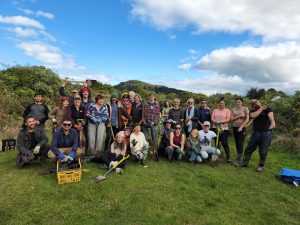
I’ve appreciated opportunities to join local board members and community volunteers at planting days in local parks and I’m really pleased to see the regeneration of the Western Springs Native Bush since the pine trees were removed.
A local issue I continue to work on is increasing the maintenance for plane tree lined streets and working with residents on a best practice approach to the leaf fall collection.
I am committed to the Governance Framework Review delivering more local decision-making to local boards, and an equitable share of resources for local boards. This will be a council focus for next term.
Council’s finances and performance

The impact of COVID-19 put an estimated $900 m revenue hole in council’s budget. Through the Emergency Budget in 2020 and the 10-year Recovery Budget in 2021 and more recently the Annual Budget 2022/23 I have supported the Mayor and Cr Desley Simpson Chair of the Finance and Performance Committee together with her Deputy Cr Shane Henderson taking a financially prudent and responsible approach. Council has kept well below the 290% debt to revenue level agreed with credit rating agencies and even the long-term target of 270%. In the coming financial year, it is projected to sit at 255%.
Some of the key points to note about Council’s finances as the term ends:
- Council has taken significant steps to find savings through focusing on value for money analysis and efficiencies since 2011/12. Council has achieved total cumulative savings of $2.4 billion, without which rates would have been 14% higher.
- We took extraordinary measures to reduce expenditure in the Emergency Budget and last year found record savings of $126 million. This year and for future years we have locked in a target of $90 million in annual savings.
- We’re taking a smarter approach to procurement, delivering more for less.
- This term alone, operational savings and efficiency achievements total in excess of $239 million with group procurement savings of just under $150 million.
- Council debt was at $10.7 billion at the end of the last financial year which is 17.6% of the total assets of Council valued at $60.8 billion. It is now at 16%.
- At the same time, we are working towards achieving 100% funding of depreciation at an additional annual cost of $25-40 million and are targeting full funding by 2028.
- Importantly throughout the challenges of the pandemic Auckland Council has retained the credit ratings with S&P Global Ratings and Moody’s Investor Services of AA and Aa2 respectively.
While making significant and necessary investments, we have kept our debt at prudent levels and our general rate increases have been below those of other metropolitan cities. Auckland has never had the highest average general percentage increase of any council in NZ as some candidates are claiming. Currently Auckland is 4th of the metropolitan cities (after Tauranga, Wellington and Dunedin).
The failure of many of our legacy councils in the past to fully fund depreciation is a cause of past inadequate levels of renewals of Council’s asset base. Former councils, in particular Auckland City Council, also failed to properly invest in the infrastructure needed to meet Auckland’s growth.
Natural Environment and Water Quality Targeted rates
The natural environment and water quality targeted rates were established in 2018 to enable Auckland Council to invest in protecting and restoring our natural environment and improving water quality.
I supported the 10-year Budget 2021-2031 extension of both targeted rates to 2031 and an increase to the water quality targeted rate, enabling the eastern isthmus water quality
improvement and southern catchments alignment programme to be brought forward six years.
Natural Environment targeted rates 2021/22 reported highlights:
-

Sunset from the HomeGround roof garden Completed the first long-term kauri health monitoring survey in the Waitākere Ranges
- 24,000 of ground based possum control delivered across the region.
- 3700 pest animals trapped on the Gulf Islands
- Kōkako surveys counted 258 pairs in the Hunua Ranges – more than double the count from 2018 thanks to intensive pest control
- Over $600,000 awarded to community groups to support capacity to support their activities
- 1257 vessel hulls were inspected in-water for level of fouling and marine pests at marinas, moorings and anchorages on the mainland and Aotea Great Barrier. Also inspected by our dog handlers and their detection dogs: 365 scheduled vehicle sailings, 21 scheduled passenger sailings, 66 unscheduled charter sailings, 198 sailings to Waiheke, 151 sailings to Aotea Great Barrier and 11 sailings to Rakino.
Water Quality targeted rate 2021/22 reported highlights:
 Five major water quality projects have been completed since the beginning of the western isthmus programme
Five major water quality projects have been completed since the beginning of the western isthmus programme- 7km of major pipes constructed with 3.1km completed in the last year
- 7km of public stormwater and waste water networks inspected as part of Safe Networks
- 45,000+ onsite wastewater assets actively monitored through a new SAP database
- Kaipara Moana Remediation programme installed 198,000km of fencing and planted 391,000 plants this year.
Climate Action
Considerable progress has been made on Climate Action this term building on the Climate Emergency unanimously declared in 2019. Work that came to the Environment and Climate Change Committee under Cr Hills as Chair and me as Deputy included:
- Te Tāruke ā Tāwhiri: Auckland’s Climate Plan
 Auckland’s Water Strategy; Auckland Council’s strategy to protect and enhance te mauri o te wai o Tāmaki Makaurau the life-sustaining capacity of Auckland’s water 2022 – 2050
Auckland’s Water Strategy; Auckland Council’s strategy to protect and enhance te mauri o te wai o Tāmaki Makaurau the life-sustaining capacity of Auckland’s water 2022 – 2050- Regional Streets for People Programme (now named Ngā Tiriti Ngangahau – The Vibrant Streets Programme)
- Climate Action Fund Delivery of $152m as part of the 10-year budget climate package
- Regional Natural Heritage Grant
- Kauri Dieback work programme including the long-term kauri health monitoring survey
- Coastal Management and Shoreline Adaption Plans
- Natural Hazards Risk Management
In addition, on 29 June, Auckland Council formally adopted the Annual Budget 2022/23, locking in a bold billion-dollar package to combat the climate crisis and laying the foundations needed for Auckland to reach its climate objectives. Funded from a Climate Action Targeted Rate the new climate package will enable $600m in new investment in bus services, funding for the procurement of new electric and low-emissions ferries and 79 new electric or hydrogen buses, completing links in the city’s cycling network and 35km of improved footpath. The rate also provides funding for native trees on streets, in parks and in road reserves, providing more green space in areas that need it most, particularly in the south of our city
On 4 August it was a proud moment when the Committee adopted the Transport Emissions Reduction Pathway, to give effect to Te Tāruke-ā-Tāwhiri’s required 64 per cent reduction in transport emissions. The Pathway recognises that tackling climate change requires transformational rather than incremental change, and that all sectors have a role to play, including central and local government, business and industry, agriculture, NGOs, local communities, and individuals.
It is exciting to have such a comprehensive strategic document in place that will be used to guide planners and decision- makers across the council group during the development of future transport plans, helping to ensure they meet the objectives outlined in Te Tāruke-ā-Tāwhiri.
Trees
As mentioned above there has been a significant increase in funding for tree planting through the Climate Action targeted Rate. This is in addition to the Recovery Budget’s $14m investment in growing our urban and rural forests, including:
- planting an extra 11,000 mature street trees;
- partnering with community to provide an additional 200,000 native seedlings per year to support council projects, plus community and marae planting programmes; and
- an additional 200 hectares of native forest in regional parks

Unfortunately advocacy to government to re-introduce the tree protection rules has not yet been successful but we continue to press on this issue led by the Mayor and Cr Hills.
The Tree Council took legal action against Auckland Council to get tree scheduling going again. Working in with a budget amendment I put up in 2020 to support scheduling when resources allow, the Tree Council’s action has resulted in council planning staff agreeing to progress the work needed to re-open the scheduling process. Those efforts are now underway and recently the Planning Committee notified the first group of trees to be considered for scheduling in years. Plan Change 83 (PC83) currently out for consultation will add 24 individual trees and four groups of trees to the schedule.
Zero Waste 2040
I have supported the council’s move to standardise waste services and charges across Auckland and move to a region-wide rates-funded rubbish collection service with a choice of three bin sizes to accommodate different household needs. Standardised services and charges across the region will mean everyone with the same sized bin pays the same rate no matter where they live.
As part of the standardisation, I support the Aotea and Waiheke local boards’ advocacy for on island solutions for the food scrap service and ensuring city centre residents have access to the same services as suburban residents.
I have been a long-time champion for establishing Auckland’s Resource Recovery Network so was especially pleased to see the Waiheke Community Resource Recovery Park open in July 2020, Te Waiorea Resource Recovery Centre at Western Springs make progress this term and the Claris Landfill transitioning to become the Aotea Transfer Station on 1 July with the continuation of iconic Anamata/Tip Shop.
The heart of Tāmaki Makarau – the City Centre
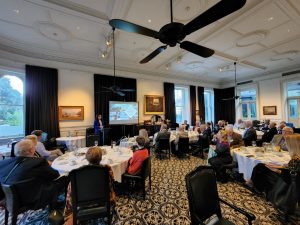 In a recent presentation to Downtown Rotary I had the opportunity to speak on the topic of City Centre Future with the brief: As the borders open, cruise ships return and pedestrian numbers trend upwards there are positive signs for the city centre after a very difficult couple of years. A multi-agency approach has responded to safety and homelessness. A number of projects have recently been completed or are back on track transforming the heart of Tāmaki Makaurau.
In a recent presentation to Downtown Rotary I had the opportunity to speak on the topic of City Centre Future with the brief: As the borders open, cruise ships return and pedestrian numbers trend upwards there are positive signs for the city centre after a very difficult couple of years. A multi-agency approach has responded to safety and homelessness. A number of projects have recently been completed or are back on track transforming the heart of Tāmaki Makaurau.
Issues top of mind for the audience were safety followed by parking and the proliferation of orange traffic cones. I talked about the step-up in police patrols and the security provided by Heart of the City. The importance of making the city centre people-friendly to increase foot traffic rather than cram in more cars which is not good for business. Driving to the city is always going to be possible it is just that how we do it and where we park is going to change. Very few in the audience knew that it is now possible to get to the airport from Britomart in 55 mins for $2.70 (train to the new Puhinui Station transfer to an e-bus). This isn’t going to suit everyone but visitors who arrive into Auckland expect to have a congestion free option.
 I also talked about the 45,000 plus residents who live in the city centre and the importance of making it an attractive place to live. There are some exciting projects underway including Wynyard Point, 4.5 hectares of new urban park, the redevelopment of the Downtown Carpark and the City Rail Link (CRL). As I wrote in an opinion piece in February 2020 I think the orange traffic cones are a positive sign of progress for Auckland.
I also talked about the 45,000 plus residents who live in the city centre and the importance of making it an attractive place to live. There are some exciting projects underway including Wynyard Point, 4.5 hectares of new urban park, the redevelopment of the Downtown Carpark and the City Rail Link (CRL). As I wrote in an opinion piece in February 2020 I think the orange traffic cones are a positive sign of progress for Auckland.

The City Centre targeted rate paid by city centre businesses and residents generates over $20m each year for upgrades such as the newly completed upper Federal Street shared space and Te Waihorortiu the Queen Street Project. I’m the Councillor representative on the Auckland City Centre Advisory Board which assists and advises on city centre issues and achieving the vision and strategic outcomes of the City Centre Masterplan and Auckland Plan. The board also advises the council on how to spend the city centre targeted rate.

I have been a long-time champion of CRL currently due to be completed in 2025. The CRL project has been significantly impacted by lockdowns, with approximately 153 days lost. Further impacts have resulted from staff needing to isolate. All infrastructure projects are seeing major inflation in material costs. Concrete, steel, and labour costs are all rising, some by as much as 16% per cent. The costs pressures are very real, but CRL is an alliance contract formed from a consortium of seven companies delivering the project. They are taking a collaborative approach to handling these pressures as effectively as possible. At the time of writing the the Tunnel Boring Machine is a few days away from its final breakthrough midtown around Mayoral Drive where Te Waihorotiu Station (Aotea) is being built.
Throughout the term I have been a member of the Central City Community Safety Taskforce first initiated in 2012 to address alcohol and safety issues within Auckland’s central city. The Taskforce has been given greater resourcing and focus this term to operate as a collaborative network of key organisations that influence positive safety outcomes for people living in, working in, studying in or visiting the central city.
In May I joined the Mayor and Cr Darby on a late night tour of hotspots with NZ Police including Wynyard Quarter where anti-social behaviour and noise from cars has been a particular issue. Since then, patrols have increased and the return of foot traffic has improved the perception of safety. There is still more to do but I think we have turned the corner especially as Te Wai Horotiu the Queen Street project moves toward completion in the next couple of months.
Timely, not just for city centre safety, but the whole of Auckland, the Safety Hub recently launched on the Auckland Council website is a new resource that gives Tāmaki Makaurau residents and visitors information on how to keep safe in their communities and what to do if they need support.
Homelessness
In the last few years there have been a massive turnaround in the measures in place to tackle homelessness and the support available for our most vulnerable. This really got underway with the adoption of Housing First in 2017 and then took off with the government funding for emergency accommodation as a result of the first lockdown.
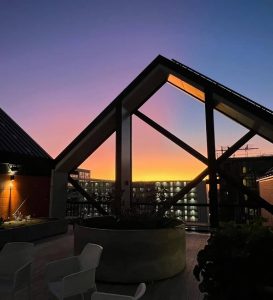
Auckland City Mission – Te Tāpui Atawhai award winning HomeGround opened earlier in the year bringing together permanent housing, health and social services, and lots of community spaces in a warm and welcoming environment. HomeGrown was 11 years in the making and cost $110m to build including a $5m contribution from Auckland Council. After many years advocating for Council to provide shower and locker services HomeGround now fills that gap.
I have also supported the Mission’s investment in two residential transitional housing services – the James Liston Hostel and Te Whare Hīnātore as well as the Mission’s plans for taking a lease of 60 apartments on Day Street for permanent housing.
Housing reforms
One of the final big decisions of this term of council was the 4 August Planning Committee approval of the public notification of a proposed plan change to the Auckland Unitary Plan to meet government’s requirements for greater height and density across the city. Consultation on Plan Change 78 is currently underway until 29 September.
I have taken the position that it is possible to confront the housing and climate change challenges the city faces and aim for the best possible urban environment at the same time as accommodating a range of qualifying matters including one that covers high quality special character. There are lots of issues with the government’s housing reforms but I have been one of a group of councillors led by Planning Committee Chair Darby who have attempted to make the legislative requirements work as effectively as possible and to look at ways council can achieve better intensification through the plan changes.
Once the submissions process has closed, an Independent Hearings Panel (IHP) will consider all submissions and hear directly from the people who submitted. They will then make recommendations to council in early 2024 on the necessary changes to the Auckland Unitary Plan. Council must then decide to accept or reject the IHP recommendations. If a recommendation is rejected, the Minister for the Environment makes the final decision.
Transport
I would have liked to have seen far more progress on the rollout of safe walking cycling infrastructure this term. The completion of the Karangahape Road Enhancement Project was a highlight but projects like Great North Road improvements, originally funded from the Urban Cycling Investment Fund, are now 6 years behind schedule. AT has been slow to deliver the quick wins needed to encourage more Aucklanders to walk and cycle for short trips.
In March 2021 I joined Cllrs Bartley, Hills and Darby in writing to Auckland Transport’s Board Chair about concerns with Auckland Transport’s delivery of “Healthy Streets” and the cycling programme. There were positive suggestions in AT’s response that have now been realised including the proposal to appoint a new single point of leadership within AT to oversee cycling outcomes, and there has been stronger direction from council on the integration of cycling improvements with renewals work. Going forward this will now be addressed as part of the implementation of Auckland’s Transport Emissions Reduction Pathway.
With regards to renewals, after years of advocacy there are now signs AT has moved on from delivering just ‘like for like’ renewals and is looking for opportunities to build assets to a higher standard. As part of footpath and kerb and channel renewals AT is contributing to delivering climate emission reductions by improving pedestrian facilities (such as footpath widening) realignment and installing missing pram crossings), installing tree pits and road side berms and generally increasing the road corridor vegetation coverage. (photos below show a small win after I went direct to the AT Maintenance manager about the opportunity to tighten the kerb line as part of the renewal).
An issue for next term will be the implementation of Auckland’s new parking strategy following considerable negative feedback on the draft that went out for consultation earlier in the year. I would like to see the strategy reframed as an “Accessibility” Plan that recognises the management of parking is just the means to improve safety, access and mobility around the city.
There has been some progress for Waiheke locals facing the brunt of high ferry fares and poor reliability. I will continue working with the Waiheke Local Board for fare equity and free children fares on weekends. I also support the Aotea Great Barrier Local Board’s advocacy for a public transport trial. On my most recent visit it was great to see the new Locky Doc secure parking and charging station located at the local board office.
Hauraki Gulf Tīkapa Moana Te Moananui-ā-Toi
 When I was first elected Councillor I had no idea I would become inaugural co-chair of the Hauraki Gulf Forum alongside Nicola MacDonald. (Or that it was even a thing!)
When I was first elected Councillor I had no idea I would become inaugural co-chair of the Hauraki Gulf Forum alongside Nicola MacDonald. (Or that it was even a thing!)
The Forum’s adoption of Co-governance leadership in February 2020 has increased the ambition for the Gulf and made the Forum relevant. At our final meeting of this term at AgriSea in Paeroa on 28 August we tabled our annual report and shared our progress. There is much to be hopeful for about the future of the Hauraki Gulf Marine Park. The images with the school of haku/kingfish represent progress we have witnessed over the past two and a half years which will, in time, lead to a healthier Gulf thanks to the amazing mahi of so many.
One of the challenges has been the misinformation campaign against the Forum and members sadly amplified by a few who have resisted the new partnership approach. However, we have been able to keep focused on our four big goals for the Gulf and share the rewards.
Support for the creative sector
The pandemic has highlighted the importance of our creative sector that was particularly hit hard because of the pandemic.

It has been great to see events and shows come back into Auckland’s calendar. As Councillor I try to accept as many invites as I can to attend events and openings at our cultural institutions and venues that are supported by ratepayer funding.
Auckland Libraries continues to be a big success of the Super city providing a seamless service across the region. I was happy to support the removal of library fines through the Recovery Budget in 2021.
The council is joining the global trend of removing library overdue fines with almost 600 libraries worldwide now fine free.
Local Government NZ
This term I have been the Auckland Councillor rep on LGNZ’s National Council and co-chair of the Auckland Zone with Waitematā Local Board Chair, Richard Northey. At the Governing Body meeting on 28 August 2022 I reported back on the term and conference and acknowledged LGNZ President Stuart Crosby and CEO Susan Freeman-Greene who have had a tremendous workload dealing with the multiple government reforms. The LGNZ conference report back, written on behalf of the Governing Body attendees is attached.
I’ve appreciated the opportunity to attend the annual LGNZ conference nearly every year over the last decade. I find it a great networking and professional development opportunity. It has also been fantastic to see how much the face of local government has changed with far more young elected members encouraged through LGNZ’s Young Elected Member group and greater Māori representation.
Acknowledgements and thank yous
As Councillors we are fortunate to be supported by an amazing team of CSAs. Many thanks to them all and the whole governance support team, especially Rachel and Jamie who are amazing at dealing with every issue that heads their way. Thanks to Alex Rogers, for his steadfast support, diplomacy, and guidance as Executive Officer of the Hauraki Gulf Forum. It has been an honour to work alongside Nicola McDonald as co-chair.
Many thanks to the wider Council whānau who are all dedicated to making Auckland a better place.
I’m grateful to have had the opportunity to work alongside Cr Richard Hills as his Deputy on the Environment and Climate Change Committee. It has been the best kind of productive, fun and positive working relationship.

Acknowledgements to Mayor Phil Goff, Deputy Mayor Bill Cashmore and Councillor Cathy Casey (photo right taken in October 2019) who are all retiring after years of dedicated public service and hard work for the people they serve. They have been great role models and awesome to work with as a new Councillor this term.
I also acknowledge retiring local board members Sue Daly, Luke Coles (Aotea Great Barrier), Graeme Gunthorp, Julie Sandilands (Waitematā) and Bob Upchurch (Waiheke). They have all made a significant contribution across the three local boards that make up my ward.
It has a been a great privilege to serve all the communities of Waitematā and Gulf ward.
Ngā mihi nui ki a koutou katoa

